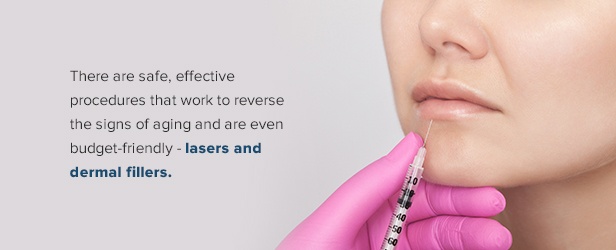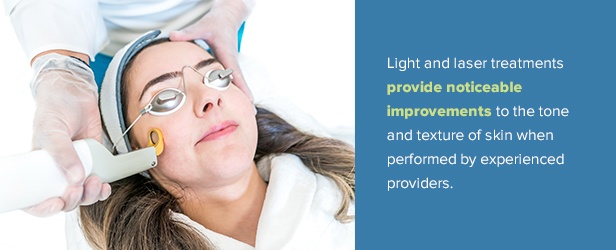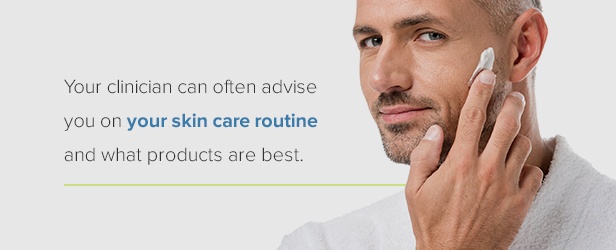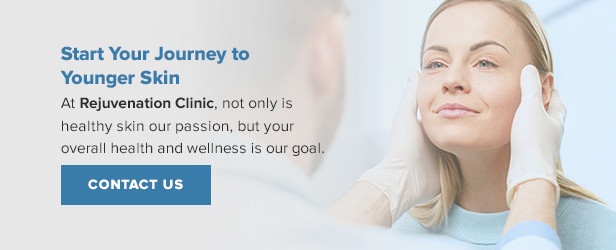If you’re concerned with reversing skin aging, and finding the best anti-aging skin care, you’re not alone. Do you remember the days of using baby oil instead of sunscreen —and long summer days outside without any sun protection at all? As anyone in their 30s or older knows, neglecting or entirely eschewing sunscreen was the norm in those earlier years. But now we know how damaging that can be, and how to take better care of our skin. And thankfully, it’s never too late to start reversing some of the damage we’ve done to our skin from sun exposure and other influences. Today, a wide array of anti-aging skin care products and treatments are available to help you look your best.
- Signs of Aging
- Causes of Aged Skin
- Develop Your Anti-Aging Skin Care Regimen
- General Skin Care
- Skin Changes With Age
- Skin Care by Skin Type
- How to Reverse Aging Skin
- Light and Laser Treatments
- Dermal Fillers
- How to Maintain Your Youthful Skin
- Start Your Journey to Younger Skin
Signs of Aging
As we get older, factors like sun exposure and other weather conditions, as well as genetics, stress levels and lifestyle habits can affect how our skin looks. Air pollution levels, weight gain or loss and even sleep position can also affect the way our skin looks and ages. While we’d all love to hang on to the healthy, baby-soft, supple skin of youth, these changes occur naturally to everyone. So, what does aging skin look like? Some of the most common signs of aging skin include the following.
- Dull, uneven skin tone: Cell renewal slows down as we age, causing a buildup of cells at the skin’s surface. These dead skin cells also cover up the natural pink tones that give healthy young skin its glow, resulting in a complexion that looks dull or uneven in tone. Lack of sleep and dry skin can also give a dull appearance.
- Brown sun spots and age spots: Sun exposure is the primary cause of age spots on the skin, and as we age they can become more pronounced. In response to sun exposure, the skin produces melanin as a protective measure, and age spots occur when cells with excess melanin cluster together. While these spots are generally harmless, they can make a person appear older.
- Red patches, undertones or visible veins: Aging skin is thinner and has less of its protective fat layers, which can result in patches of redness and more visible veins around the face.
- Sagging skin and wrinkles: As skin ages, it also loses its elasticity along with the fatty under-layers, which can lead to sagging and wrinkling. Sun exposure and smoking, as well as frequent facial expressions like frowning and squinting, can also cause premature aging.
Causes of Aged Skin
For most people, the above symptoms are part of the natural processes of aging, and sun damage accelerates these over time. That doesn’t mean, however, that the sun is the only culprit of visible aging. Several other external factors can also play a role in causing the symptoms of aging skin.
- Medical skin conditions: Certain medical conditions, like rosacea, can cause excessive facial redness, bumps and spider veins, leading to earlier signs of aging. Conditions such as these are often hereditary, so a person’s genetics and family history can determine if these symptoms appear, as well as their severity.
- Cigarette smoking: We all know smoking is harmful to the body and overall health, but it’s also detrimental to skin health. The nicotine in cigarettes causes the blood vessels in the skin to narrow, restricting blood flow to the skin, as well as the delivery of vital oxygen and vitamins. Dangerous chemicals in cigarettes are also damaging to the skin tissues, and facial movements like pursed lips when smoking also accelerate wrinkles and other signs of aging. Those who smoke frequently often have more wrinkles and duller skin tones than nonsmokers of similar ages. Skin wrinkling from smoking increases the longer a person maintains their smoking habit. Wrinkles from smoking can also appear in other areas of the body, like the upper arms. The skin of smokers can take longer to heal when injured, and is often drier and more frail.
- Weather conditions: Extreme climates and changing weather conditions can wreak havoc on our skin, resulting in skin that’s less healthy overall. In cold weather climates, the frigid temperatures, wind, snow and more leads to skin that’s more commonly dry, red and cracked. On the other hand, a hot and humid climate can also be hard on the skin — those living in these type of conditions often struggle with excessive oil production, clogged pores and yeast infections on the skin.
- Hydration levels: Proper hydration — including using quality skin moisturizers as well as drinking enough water — can aid in overall skin hydration, decreasing dry skin symptoms and chances of wrinkling over time.
- Stress levels: Excessive stress affects not only mental health, but also many physical symptoms throughout the body, including visible signs in the skin. Stress can accelerate the early signs of aging like wrinkles, as well as adult acne and oily, more porous skin.
When you think about your current skin health, do any of these issues sound familiar? Maybe tanning or smoking earlier in life have affected your skin, as well as uncontrollable factors like air pollution, weather conditions and family genes. Are you always on the lookout for the best wrinkle treatment, skin lightener, pore reducer or age-reversing potion? It’s never too late to start an anti-aging skin regimen, and a combination of a healthy lifestyle with high-quality skin care products. Investing in advanced non-surgical skin treatments can reverse and prevent skin aging and restore the beautiful, glowing skin of your youth.
Develop Your Anti-Aging Skin Care Regimen
Caring for aging skin all begins with a customized daily skin care regimen. If your current skin care routine involves the same products you’ve used for years, products that are on sale or if you follow the latest trends from television and magazines, watching for what your favorite celebrities use, it may be time for a skin care refresh. These methods aren’t always the best for developing a skin care regimen that works, and that’s tailored to your skin’s personal needs.
A little homework can make all the difference in finding not only the best products for aging skin, but the ideal combination of products for your skin. Luckily for you, we’ve researched it for you, to help you find the right skin care and treatments and take decades off your face.
Before we get into the details of skin care routines, it’s essential to note that skin care products like topical creams, ointments, moisturizers and serums cannot turn back time on their own. However, they are an integral part of an overall skin care regimen, and a great place to start.
General Skin Care
Regardless of your age and skin type, everyone needs some fundamental skin care items. You can tailor these components to your specific needs, and add in other products if you like, but these are the three basics everyone should use daily.
- Cleanser: Washing your face twice daily with a gentle cleanser formulated to your skin type removes dirt, oil, makeup, environmental impurities and dead skin cells that build up on the face throughout the day. Cleanse your face both in the morning and right before bed for best results.
- Moisturizer: After cleansing, apply a facial moisturizer to help keep the skin’s natural protective barrier functioning properly and make the skin feel soft and smooth. You may want to use a lighter-weight moisturizer during the day and a heavier one for extra moisturizing at night, or find a formula specific to your skin type.
- Sunscreen: Many moisturizers have sunblock in them, but if your moisturizer does not have sunscreen in it, you’ll need to apply some separately. Make sure to get broad-spectrum sunscreen that blocks both UVA and UVB rays. Use at least an SPF 15 during the winter, and SPF 30 during the summer or when doing other activities in direct sunlight. Reapply sunscreen as necessary throughout the day, especially if you sweat or get wet. Sunscreen will help protect against both skin cancers and cosmetic sun damage.
Skin Changes With Age
- 20s: In addition to your sunscreen and daily cleansing routine, you should consider using a water-based, oil-free moisturizer formulated for acne-prone skin that will keep your skin looking its best. If a breakout occurs, a gel-based cleanser or toner that contains salicylic acid is often beneficial.
- 30s: Wrinkles and fine lines may start to appear in your 30s. This decade is when learning how to get rid of forehead wrinkles or lines around the eyes becomes a top concern for many. Add anti-aging serums or creams that contain retinol to your beauty regimen.
- 40s: Fine lines, wrinkles and old age skin spots become more apparent in your 40s. By this decade of life, wrinkles are generally fully formed and often present even when your face is at rest. That’s why a daily moisturizer that contains growth factors, ceramides and peptides — known for their ability to even out brown and red pigments and to increase collagen production — could be your best daily wrinkle treatment. Another ingredient to consider adding is glycolic acid, which helps accelerate skin cell turnover, getting rid of dead skin cells and brightening the complexion.
- 50s: Due to hormonal changes, skin tends to become drier and less healthy in your 50s. If you’re in this age range, you may have already noticed this. An advanced daily moisturizer with antioxidants such as Vitamins C and E, along with a heavier nightly moisturizer, will help rehydrate and repair the skin and prevent further aging.
- 60s and beyond: After menopause, there’s a significant drop in natural estrogen production. Continuing to use products with growth factors, peptides, antioxidants, retinol and moisturizers will be a crucial part of your daily routine. Sunscreen also remains the most valuable product in your arsenal to fight aging as well as skin cancer.
Skin Care by Skin Type
Even though age is crucial to finding the appropriate skin care routine, your skin type also makes a significant difference in what products you should use. You’ll want to find skin care products that work best for your skin type to achieve the best results.
- Dry skin: Dry skin lacks the sebum and lipids necessary for maintaining the right levels of moisture. As a result, the skin’s protective barrier can be compromised, feeling rough and looking dull. Heavier moisturizers may be necessary for those with dry skin. Gentle cleansers that won’t dry out skin, and gentle exfoliants that slough off dead skin, are also essential.
- Oily skin: Oily skin results from an over-production of sebum, leading to skin that looks shiny or oily and enlarged pores. To care for oily skin, you’ll want to use gentle products that won’t contribute to excess oil production. Lightweight moisturizers are best. You may also want to add a toner and a gentle exfoliating product, both designed specifically for oily skin.
- Combination skin: Characteristics of this skin type include an oily T-zone and enlarged pores, with normal to dry cheeks. Caring for combination skin may take a little extra work, trying out different products until you find what works for you. You can also try treating the various areas of the face with different products — using both oily skin and dry skin products in the appropriate areas to balance out your face. Use gentle cleansers, and add in a toner and gentle exfoliant.
Acne-prone skin: Similar to oily skin, with acne-prone skin, you’ll want to use gentle products that do not contribute to excess oil production. Use cleansers and moisturizers formulated for acne-prone skin, and avoid harsh exfoliants that can irritate pimples more and damage the delicate skin. Be sure that all moisturizers and makeup products will not clog pores, and look for anti-aging products specifically for acne-prone skin often called non-comedogenic.
- Sensitive skin: Like dry skin, sensitive skin may also have a compromised protective barrier, so heavier moisturizers often are best. Allergies or sensitivities to specific ingredients may cause sensitive skin, so it’s best to avoid harsh chemicals and fragrances. Try using gentle cleansers, micellar water or regular tap water for cleansing. Always use moisturizer right after washing your face, and look for anti-aging creams uniquely formulated for sensitive skin.
How to Reverse Skin Aging Skin
Skin care products are an excellent place to start if you want a more youthful look, but it is essential to remember that topical creams and serums cannot entirely erase wrinkles and other signs of aging on their own. While they help you have healthier skin, to reverse the signs of aging, you may want to explore some of the many anti-aging skin treatments and procedures available.
Today, we are awash in celebrity endorsements and advertisements for expensive skin care products and treatments, and it can be overwhelming to sort through all the information to know what works to fight aging skin problems. The good news is that there are safe, effective procedures that work to reverse the signs of aging and are even budget-friendly. Two categories of these skin care for aging skin treatments are lasers and dermal fillers.
Light and Laser Treatments
Some of the most affordable ways to combat the effects of aging are light and laser treatments. Many of these techniques have been around for more than 20 years, and have continued to improve as technology advances even further. Today, they are among the best treatments for aging skin.
Intense pulsed light, or IPL, is one such option that shows much promise for reducing the signs of aging and overall skin rejuvenation. IPL or photofacials, also known as BBL or broadband light, can even out and brighten skin tone, as well as reverse the visible skin age. The treatments excel at reducing the appearance of age spots, broken blood vessels, scars, rosacea and other pigmentation issues, resulting in much younger-looking skin. Several studies have confirmed these treatments are a safe way to reverse skin aging and repair damaged DNA. Photofacial treatments work well for any age or skin type, and you can consult with a provider to go over any concerns you may have about your skin and health history.
Light and laser treatments provide noticeable improvements to the tone and texture of skin when performed by experienced providers. SkinTyte treatment uses infrared light to heat the skin layers using a healing infrared wavelength. Providers such as physical therapists and chiropractors often use infrared light therapies to heal scars, injuries and relieve chronic pain. Another point regarding the safety of light and laser treatments is that they filter out any unnecessary or harmful wavelengths such as UVA, UVB, X-rays and gamma rays, to name a few.
How do these light therapies work? Light-based therapies such as BroadBand Light and SkinTyte rely on the principle of selective thermolysis to heat the middle and deep layers of skin while providing a cooler, comfortable level of warmth at the top. These treatments deliver light energy in a sequence of rapid, yet gentle, pulses that promote the denaturation and contraction of collagen, thus skin tightening. The deep heating also elicits a natural healing cascade to create new collagen.
Light and laser treatments are non-invasive and provide many benefits. Some of the most common positive results you can expect to experience with this type of procedure are:
- Younger-looking skin with each session
- A possibility of fewer occurrences of skin cancers, including squamous and basal cell cancers
- Dimished spider veins and age spots on skin
- Improved redness and bright, even skin tones
- Tighter skin and smaller pores with smooth texture and improved integrity
One of the most significant advantages of laser procedures is that there is no downtime, and virtually no side effects. The time you’ll need to set aside for your appointment will vary depending on the area of the body you’re getting treated, but you can plan on about 30 minutes for your face, and a little longer for a larger area. Many clients describe the skin tightening procedure as a pleasant experience, feeling like a hot stone massage. There is no recovery time, and most clients only experience a mild pinkness to the skin immediately after treatment, with no peeling, flaking or any other adverse effects.
If you’d like to find out if laser and light therapies can work for you and your skin, visit the experienced providers at Rejuvenation Clinic of Sauk Prairie to receive a thorough complimentary consultation. During this time, we will review your history, skin type and skin concerns. We’ll do an advanced skin analysis to provide you with customized skin care recommendations. At your consultation, you can discuss with your provider the number of treatments you may need. The results and treatment plan can vary from person to person and can depend on age and skin condition. Your care provider can analyze your unique skin type and propose a customized approach that works best for you.
Dermal Fillers
Another detriment of aging is that every person begins to lose collagen, bone and other skin support structures as part of getting older. Think of your youthful face as a grape that slowly deflates to a raisin as we age. For skin rejuvenation, you might need something more than light or laser therapy. The loss of collagen means that even with the best daily regimen and the best lasers, once-perfect skin can quickly become wrinkled and saggy.
As we age, our skin naturally loses volume. Factors like gravity, sun damage and other environmental conditions, as well as habits like smoking, make this volume loss more pronounced. During these natural aging processes, we experience a loss of bone structure and other building blocks of skin like collagen, elastin and hyaluronic acid. What exactly does this mean? This loss of volume can manifest itself in several different ways in the face:
- Flattened, sagging cheeks and jawline
- A loss of roundness to the face and more square of heavy-looking face shape
- Dark under-eye circles or hollowing around the eyes
- Thinner skin that lacks definition and elasticity
- Wrinkles and folds, especially around the nose and mouth
- Lips that are thinner and lacking definition
Volume loss generally starts around age 30 and worsens over time. By age 50, many of us will discover — or have already noticed — lines around our noses and mouths, dark circles under our eyes, droopy eyelids and sagging jawlines. If you’re at this point, you’re not alone.
One of the best ways to help alleviate this issue and restore a youthful look to the face is with dermal fillers. These injectable products are most commonly made of hyaluronic acid which is a gel-like substance injected directly under the surface of the skin with a fine needle. Dermal fillers plump up the skin, reducing the appearance of fine lines and wrinkles, and fill in areas depleted by aging, weight loss and more.
What is the procedure like for dermal fillers? Minimally invasive and non-surgical injectables are an in-office treatment that usually takes 30 minutes or less. First, we apply a topical numbing cream for 30-60 minutes before the treatment to help alleviate any discomfort. During the procedure, we use ice and other distraction techniques to help lessen any pain, swelling and sensitivity. Your clinician will use a fine needle or blunt-tip cannula to inject the gel-like fillers in the appropriate places just under the skin. Most patients experience little to no discomfort and can return to light to normal activity right after their appointment. Results should be noticeable right away and can last for 1-2 years or more depending on the product being used and the area being treated.
Either on their own or in conjunction with laser and light treatments, dermal fillers reverse many of the natural signs of aging. Dermal fillers recreate and restore the skin or structure of our youth, and if done with a skilled, artistic touch, looks very subtle and natural.
How to Maintain Your Youthful Skin
Once You’ve treated yourself to skin procedures like light and laser therapy or dermal fillers, and have found your perfect skin care routine, you’ll undoubtedly want to maintain this youthful look you’ve worked hard to achieve. You’ll want to have a plan with your clinician for when you should check back in for any maintenance treatments needed to keep up your new look. Your clinician can also often advise you on your skin care routine and what products are best. Keep using your skin care products for optimal results, too.
Even with a proper skin care routine and added treatments and procedures, age and other external factors will continue to affect our appearance and age our skin. It can be frustrating when so many things outside your control, like genetics and environmental conditions, change the way you look. Thankfully, you can do several things to help maintain your youthful look, and as a bonus, many of these tips protect your body’s overall health, too! Try these maintenance tips for best results.
- Get your rest: Being tired doesn’t look good on anyone, and can contribute to puffiness in the face and dark undereye circles. Getting in seven to eight hours of sleep every day is ideal, so aim for this amount. Go to sleep earlier if needed, and make a habit of having a set sleep schedule that remains the same every day.
- Relieve stress: Stressful conditions are tough on the body and our appearance. Finding ways to relieve stress in your life will improve your health and keep you looking young. Try adding in meditation sessions, journaling or other artistic expressions, yoga classes, physical activity or talking to a therapist or friends.
- Implement your skin care routine: Once you find the right products for your skin, it’s essential to use them every day. Cleanse your face twice daily, always applying moisturizer right away. Use sunscreen and anti-aging products to help slow any further signs of aging.
- Exercise Regularly: A regular exercise routine is excellent for overall health and fitness, but will also increase circulation throughout the body and make skin look healthier and more radiant.
- Eat nutrient-dense foods: Healthy eating provides many benefits for the whole body. Aim to cut back on processed foods, and consume healthier whole foods, which have plentiful nutrients that help the body heal faster and improve the skin’s appearance.
- Ditch the smoking habit: This should be a no-brainer, but if you are a smoker, try to quit immediately. This dangerous habit is detrimental in many ways, introducing a host of damaging chemicals into the body and reducing oxygen flow to the skin, threatening your youthful glow. If you have trouble quitting, seek help from a doctor or therapist as soon as possible.
- Limit alcohol: Drinking more alcohol than you should can lead to dilated blood vessels, red blotches and skin conditions like rosacea, all of which can age your skin. Limiting the amount of alcohol to 2-3 drinks for men, and 1-2 for women, helps prevent this. Don’t drink alcohol every day, limit the amounts when you do and be sure to drink plenty of water along with your alcoholic beverages.
- Drink plenty of water: It’s crucial to many different bodily functions to stay properly hydrated. Drinking enough water means your skin stays moisturized from the inside-out and you’ll have a lower chance of dry skin. For the most radiant skin, aim to drink about 60 ounces of water every day.
Start Your Journey to Younger Skin
If you’re wondering how to reverse aging skin, now is the perfect time to make a change for the better. There are more safe and effective non-surgical skin treatments available than ever before. As skin care professionals at Rejuvenation Clinic of Sauk Prairie, we pride ourselves on staying current with the latest technologies, including state-of-the-art laser and light therapies and injectable treatments like Botox and dermal fillers. We can restore beauty with minimal to no downtime, and believe safety is a priority, as well as natural-looking results.
At Rejuvenation Clinic, not only is healthy skin our goal, but your overall health and wellness is our passion. We are dedicated to helping you feel confident and look your very best. Contact us today to answer any questions or to schedule an appointment to get started on your journey toward vibrant, younger-looking skin.
Post by: Michelle A. Niesen, MS, PA-C



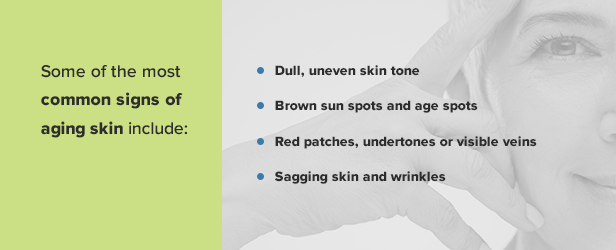
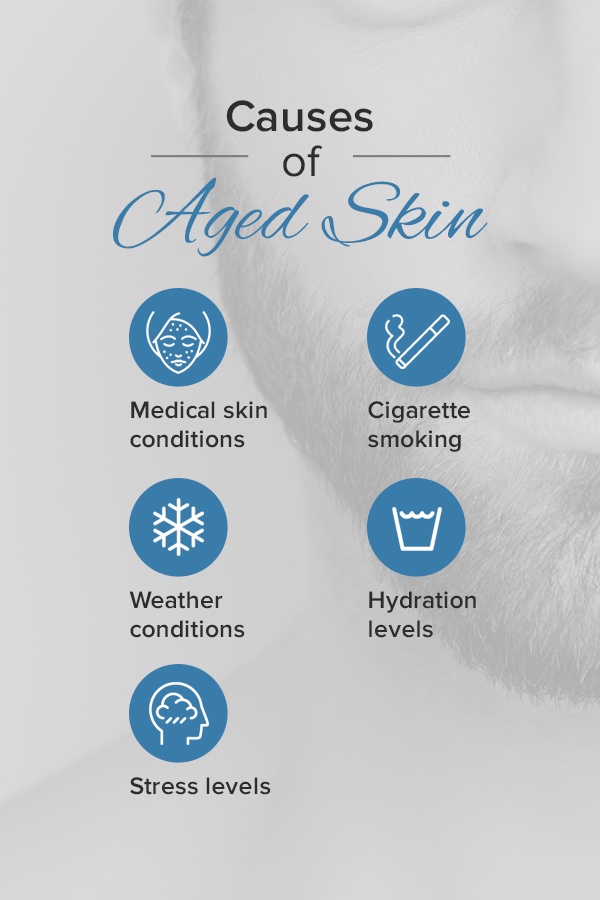
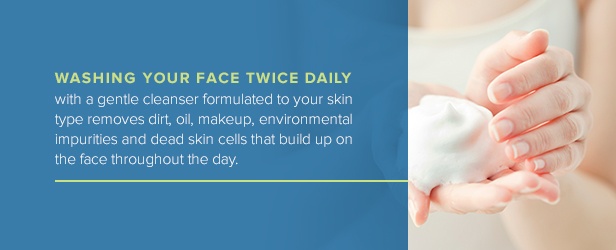
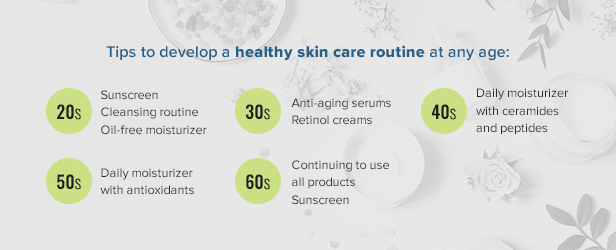
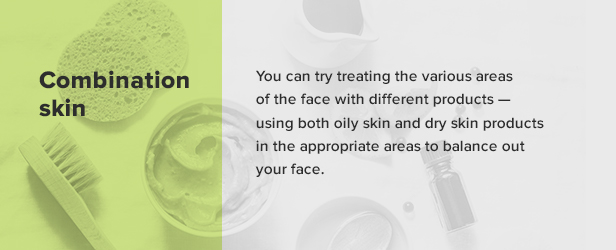 Acne-prone skin: Similar to oily skin, with acne-prone skin, you’ll want to use gentle products that do not contribute to excess oil production. Use cleansers and moisturizers formulated for acne-prone skin, and avoid harsh exfoliants that can irritate pimples more and damage the delicate skin. Be sure that all moisturizers and makeup products will not clog pores, and look for anti-aging products specifically for acne-prone skin often called non-comedogenic.
Acne-prone skin: Similar to oily skin, with acne-prone skin, you’ll want to use gentle products that do not contribute to excess oil production. Use cleansers and moisturizers formulated for acne-prone skin, and avoid harsh exfoliants that can irritate pimples more and damage the delicate skin. Be sure that all moisturizers and makeup products will not clog pores, and look for anti-aging products specifically for acne-prone skin often called non-comedogenic.